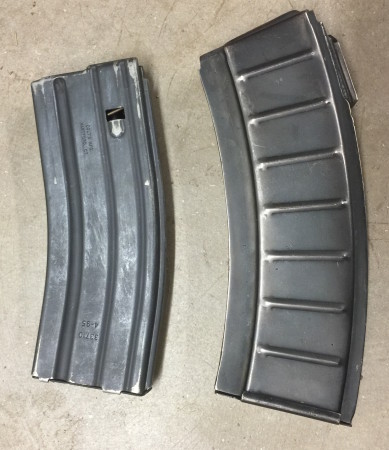
The XM-19 was one of a series of Special Purpose Infantry Weapon (SPIW) prototype designs in the 1960s and 70s – a project which was attempting to increase the hit probability of infantry weapons. Several different approaches were tried to this end, including firing multiple cartridges in very fast succession, firing single cartridges with multiple bullets, and firing flechette darts (both individually and in clusters). This magazine is for the XM-19, which was a weapon dating to the late 1960s. It holds 50 rounds (all of the SPIW weapons needed large magazines) and was made for the XM-645 cartridge – more on that in a moment.
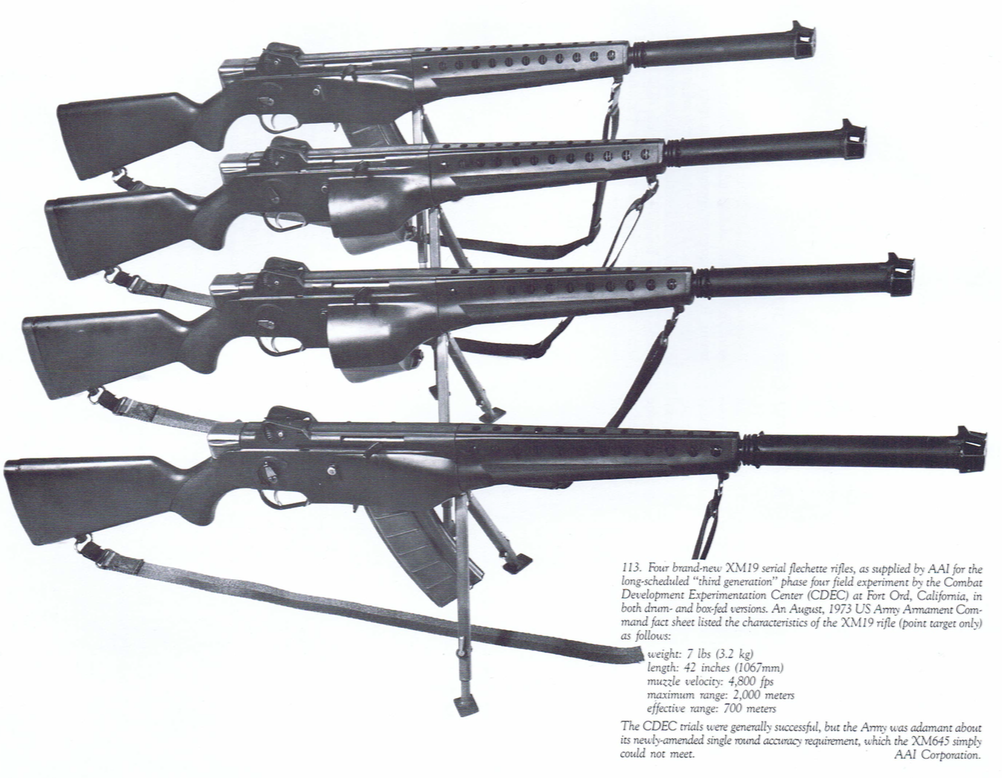
The magazine is interesting in particular because of its spring. What could conceivably make a magazine spring interesting, you ask? Well:
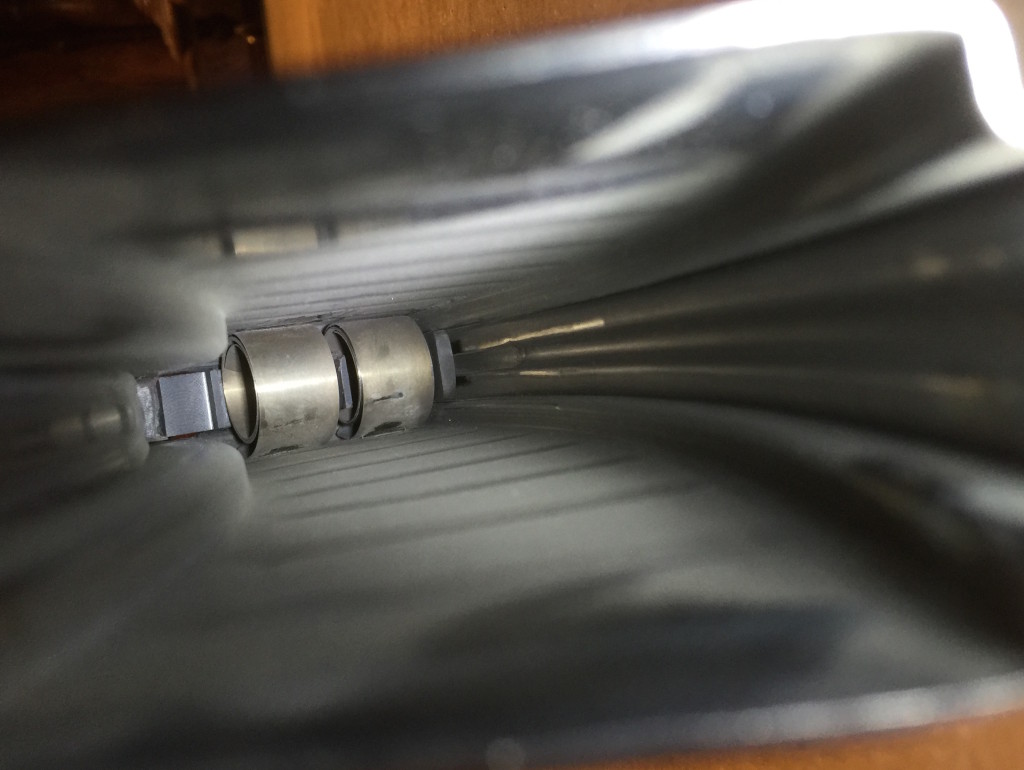
That’s the spring – well, the two springs. They are a pair of flat metal strips rolled up like ribbons affixed to the top of the magazine body and pushing against the follower. As ammunition is loaded in and the follower is pushed down, the springs unroll and flatten out, but are always trying to roll up, thus providing the motive force to push cartridges up. Pretty neat, eh?
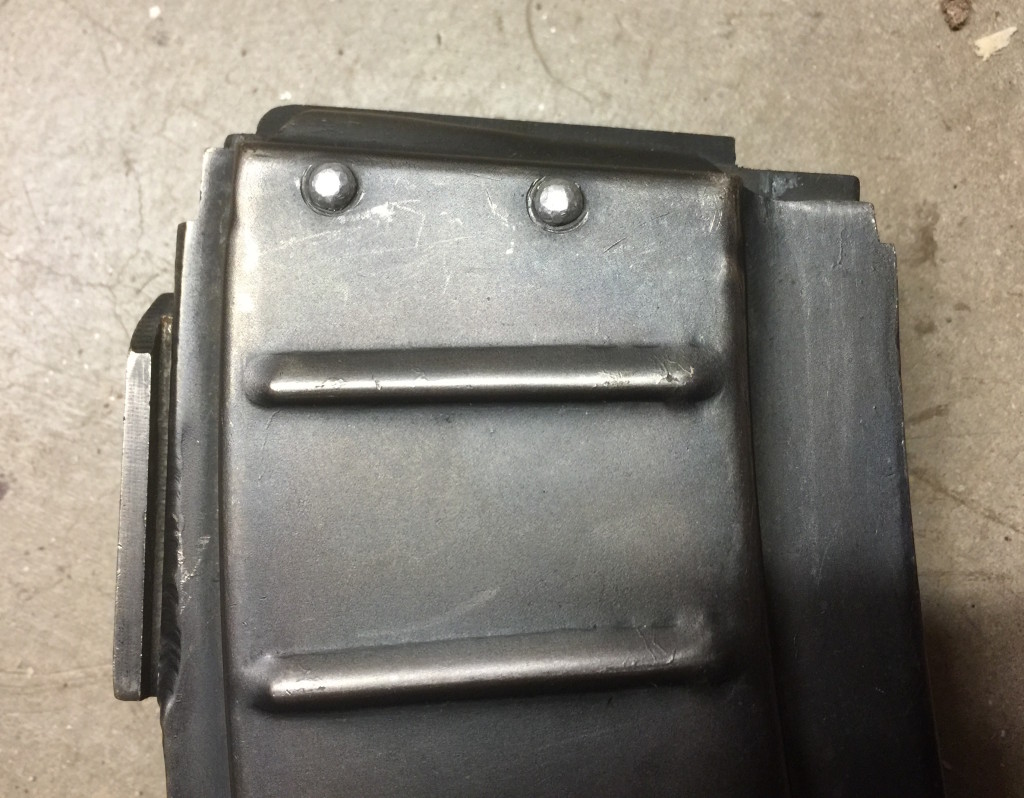
Now, the XM645 cartridge itself was a bit longer than a 5.56mm NATO cartridge, and fired a 10.2 grain flechette as at remarkable 4800 feet per second (that’s 0.66 grams at 1460m/s). The flechettes were stabilized in the barrel by a fiberglass sabot at the front, which was removed by a “stripper” device at the muzzle. This sabot and stripper created one of the problems with the XM-19…traveling at 4800 fps, the sabots were basically vaporized at the muzzle. That fiberglass vapor would often then get into the firer’s eyes and lungs causing significant irritation (and probably some sort of horrible lung cancer). For this and other reasons, the XM-19 was eventually dropped.
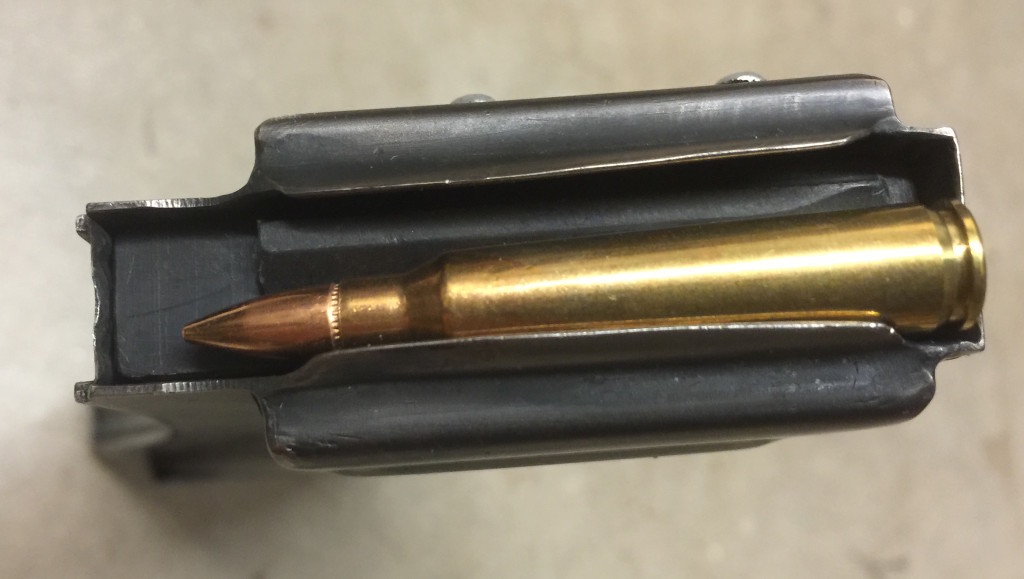
One other interesting side note of the XM-645 cartridge and XM-19 weapon was that it was a piston-primer system, which is a different way of saying primer-activated – the same mechanism as the first Garand rifle prototypes. Since the XM-19 would naturally use its own proprietary ammunition, changing it to have a moving primer would not cause logistical problems. Here are a couple views of the cartridges:
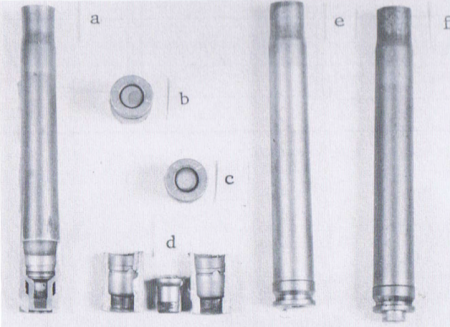
Note that the far right cartridge shows the primer in its fully extended (fired) position. The primer moving backwards like that provided the energy to unlock and cycle the action of the weapon. In the far left cartridge cutaway, you can see how the primer is made specifically to have this amount of movement upon firing. Unlike primer-actuated guns using standard ammunition, this cartridge incorporates an intentional limit of travel for the primer.
Here are an assortment of additional photos of the magazine:

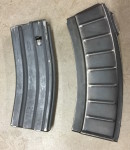


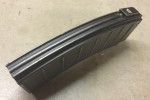


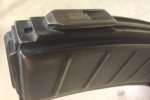
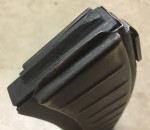
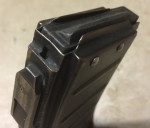
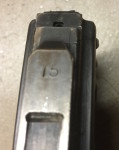
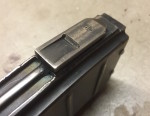
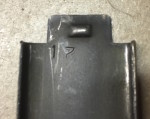
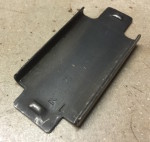
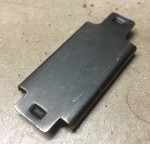
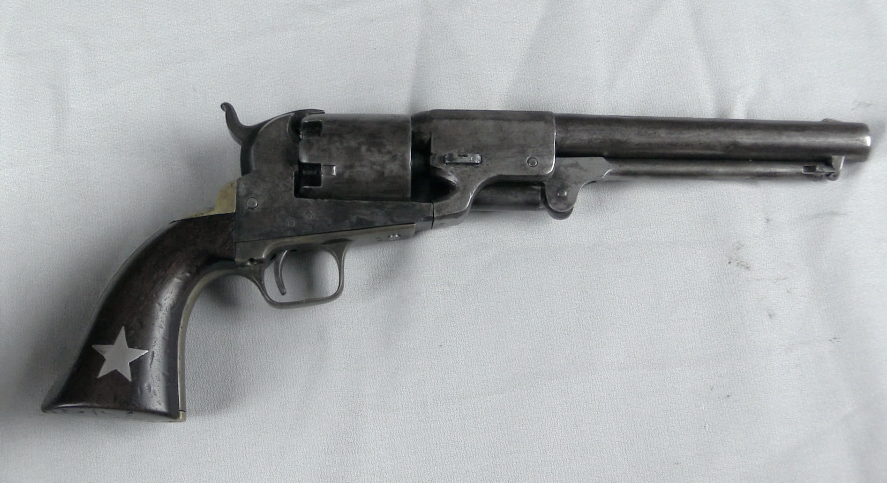
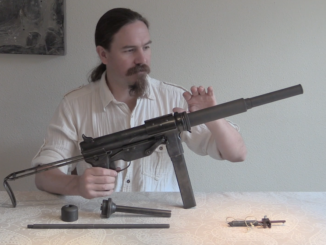
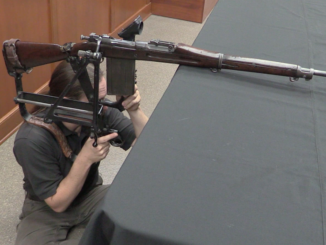
Constant force springs like those shown have been adapted for firearm magazines by many inventors, including Gene Stoner. They are typically seen in higher capacity designs, like the 50rd magazines that Colt and NWL-Dahlgren developed for the SEAL teams during Vietnam. More recent applications have been the Eagle and Ram-Line pistol magazines of the 1980s/1990s, and the current TorkMags for the AR-15.
Besides the reduction in the height of the magazine, the constant force spring allows just that, a relatively constant force in lifting the the stack of cartridges from beginning to end. With conventional coil springs, you risk either lacking enough force to lift the last cartridges in the magazine, or too much force when the magazine is full. The latter causes drag against the bolt and makes the magazine too difficult to seat when the bolt is closed. The downside to constant force springs in magazines has always been reliably keeping the springs attached to the magazine tube. The rivets pop, or the holes in the spring or magazine tube egg out or crack.
FOR FIRST TIME IN MY LIFE I HEARING ABOUT THIS WEAPON.
I have a magazine for my P226 that uses a constant force spring. I think the manufacturer was “Ram Line” or something like that. It holds 18 rounds but still fits flush like the factory 15rd magazine. Ian, I can send some pics of it if you like.
“XM-645 cartridge”
Interestingly it looks as belted cartridge. Is that belt intended for headspace (as in ·375 H&H)?
If yest this would be example of rare used in military weapons method for headspace (other such example is 20×138 cartridge – http://www.municion.org/20mm/20×135.htm )
You are probably right, considering length of case and less than adequate shoulder to rest on. Also, the pressure to achieve that horrendous MV must have been high. In relation to that, the case diameter is small to maintain reasonably thick barrel.
Set of compromises, like with anything else.
The Baltimore Sun had few articles on this in the early ’70’s.My father-in-law was a buyer at AAI in the early 1990 ‘s.About the time AAI had developed that Air -Deployable Light Tank that Hasbro made famous,in GI JOE .
While I wouldn’t want to shoot those rounds into the wind and get a load of powdered fiberglass into my eyes, cancer would be the lesser worry. The glass fibers are at least an order of magnitude bigger than asbestos fibers, and typically don’t cause the same type of issues.
“sabot (…) which was removed by a “stripper” device at the muzzle”
See experimental Лукин sniper rifle, which also has device at muzzle:
http://raigap.livejournal.com/121811.html
Ian, thanks for another interesting post.
In my (long ago) days of hypervelocity impact testing, I had to do a small package of work to impact some composite material samples with a “standard impactor”, namely a 6mm steel ball bearing at a customer specified velocity of 1500m/s.
Hence I was interested to see the quoted design muzzle velocity of 1460m/s for those flechettes.
My solution used an old P14 WWI Enfield rifle that had been re-purposed as 7.62mm NATO (aka 0.308 Winchester) target rifle and some commercial sabots, as intended for the firing of conventional 5.56mm (0.223″) bullets from such rifles.
Those sabots worked really well, and I didn’t have to use an excessive powder charge to get a muzzle velocity of 1500m/s.
We had a cunningly designed (crude but effective) digital line scan system that we used for muzzle velocity measurement. Its images showed us that our sabots remained in the solid state as they exited the muzzle – but then broke up to aid the process of sabot separation, as they were designed to do.
Couldn’t they just have made the sabot out of something else than fiberglass?
At the time, maybe not. It was early in the world of high tech plastics. More R&D would have probably found a better material but general dissatisfaction with the round gave little incentive to pursue it.
Speaking of flechettes, check out this “152mm XM617 Anti-Personnel-Tracer”:
https://www.facebook.com/OrdnanceTrainingandHeritageCenter/posts/1096833973733331
Didn’t one Iraqi “Elite Republican Guardsman” get ripped to shreds by a Depleted Uranium flechette when he attempted to take on an M1 Abrams face to face with an RPG-7? The tank gunner shot on reflex, not even bothering to switch the fire-selector to coaxial heavy machine gun…
At least one U.S. tank gunner made the same snap reaction, firing the 120mm smooth-bore main gun, instead of the co-axial MG. In his case he became a confirmed pacifist and was discharged.
One gulf war vet I’ve talked to saw strange elongated shreds of Iraqi uniform in the dirt and sand. He shortly realized that these were corpses extruded through the ‘through-and-through’ DU penetrators from Abrams’ main guns.
A USMC woman told me how after the Saudis expressed displeasure at the treatment of fellow Sunni remains, her detail went out to collect limbs and overlooked bits for, erm, ‘religiously correct’ burial.
A former housemate revealed how a former housemate of hers gave off a seriously disturbed vibe. One day, he shared the contents of his medical file and psych exam, both of which he’d stolen, since either one might cause him problems in the future beyond his crazy, disturbed condition. His comrades=in-arms had notified medical personnel about his predilection for vamping around with a desicated,severed Iraqi head y’see…
I suppose you mean the APFSDS round by flechette, although the actual projectile is hardly a “flechette”, which are usually small darts. For the 105mm M68 tank gun an actual flechette shell also existed, although I don’t know if they were used during the ODS. It contained several thousand small steel flechettes and was colloquially called “Beehive” due to the buzzing sound the flechettes made in flight.
Flechette shells were almost pure anti-personnel (APERS) rounds and quite effective against troops in the open. Basically they were a modernized version of shrapnel shells, which were popular in the late 19th Century and all the way to WW1, with flechettes replacing the steel or lead-antimony balls of shrapnel.
Interesting, those tiny flechettes had only about 520 FPE at the muzzle. What complicated ammunition too, when you add in the piston-primer to the flechette and the sabot. That’s a tremendous amount of effort for a very tiny payoff. No wonder the concept failed.
Though it does make me wonder what a constant-recoil M16 would be like if fitted with a linear-comp and chambered in .204 Ruger.
I suspect (and read something in that sense in past) this concept was based on hypothesis of one man who apparently had the say and trust at the time. Everything after is “team effort” which does not seem to go that far either.
Ian-
I see you reference a few pictures from SPIW: The deadliest weapon that never was. I’ve been interested in that book for years but it often demands a high price, do you think it’s worth the current market rate ($150-200)?
Thanks! Great article!
Well, if you need information on the SPIW programs, it’s really the only source I know of…
How much does this magazine weigh empty?
I also had some Ram Line constant force spring magazines in the late 80’s. 15 Rounds flush fit in my 9mm Browning Hi-Powers when 13 was pretty much it in a standard sized mag. Never had any malfunctions with them, and were my primary carry mags for many years.
I wouldn’t recommend it, but I did test and proved to myself that you could use the magazines without the base plates, which acted more as environmental protection than a part of the magazines feeding function.
Thanks for the Awesome Article Ian!
https://docs.google.com/viewer?url=patentimages.storage.googleapis.com/pdfs/US3087270.pdf
E.M stoner He designed a similar magazine, please see the patent
Are there any other magazines that use that sort of spring setup? It’s very interesting and seems like it’d increase mag capacity, since the spring is smallest when the mag is fullest which would take up less space than traditional mag springs pushing up from the base of the mag.
It’s a real surprise to hear about the Xm 19 ,it was still considered a top secret weapon at the time back in the 70 when I got drafted in 1971 station at Fort Ord California .I was attached to a unit that that developed different ideas for the military. It was amazing to know that lots of the ideas help improve the M16